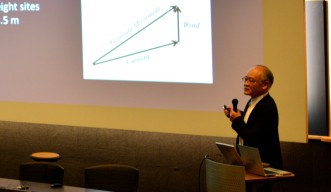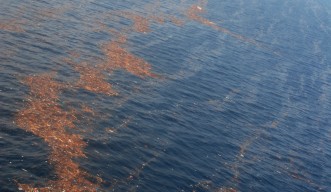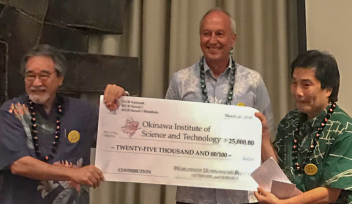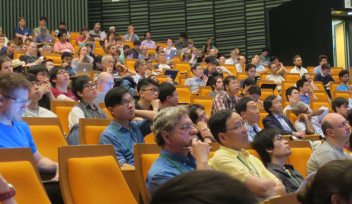Tracking Japan’s Tsunami Debris
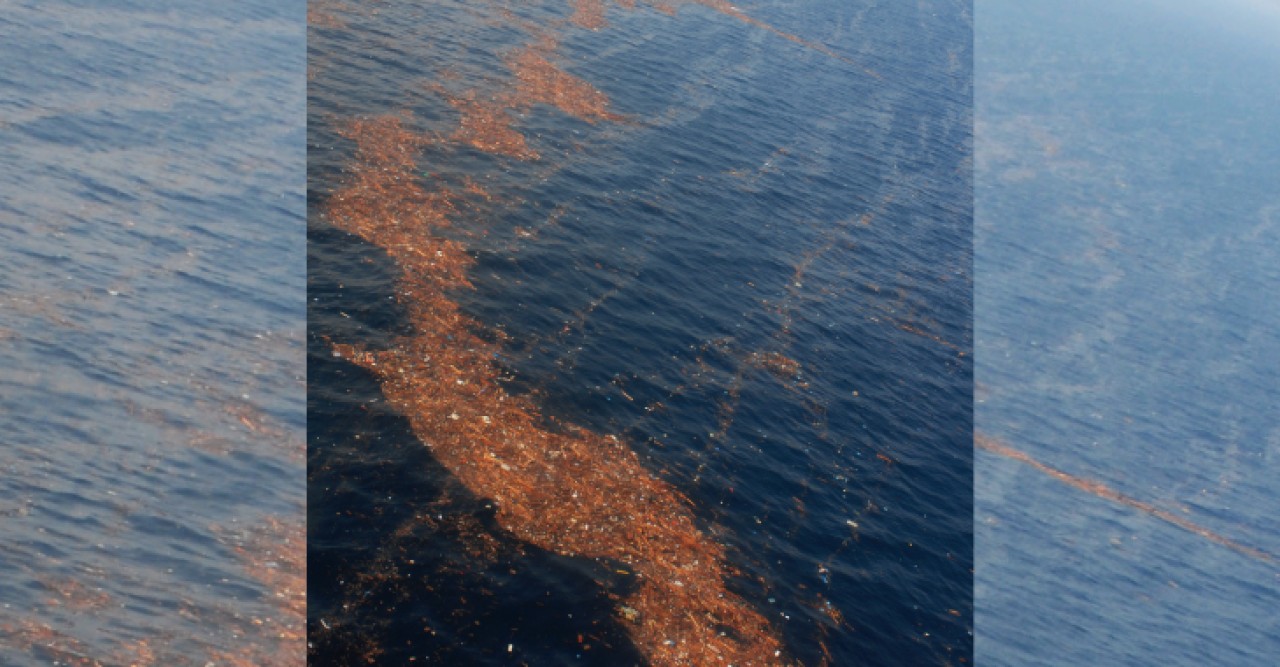
On October 25, the International Workshop on Marine Debris, Environmental Monitoring, and Disaster Mitigation took place at OIST. This public event was hosted in conjunction with a two-day workshop on the Northwest Pacific Action Plan (NOWPAP) to discuss issues of marine waste. NOWPAP was adopted by the United Nations Environmental Program (UNEP) in 1994.
In the aftermath of the Great Eastern Japan Earthquake of March 11, 2011, a tremendous amount of debris washed out to the Pacific Ocean. Pieces of debris such as docks and fishing vessels have washed up along the western coast of North America. The workshop presented the results of a project initiated by the Japanese Environment Ministry to monitor, analyze, and predict debris movements. This was a collaborative effort by several research institutes in Japan, such as Kyoto University, Japan Agency for Marine-Earth Science and Technology (JAMSTEC), and the National Oceanic and Atmospheric Administration (NOAA) in the U.S.
According to estimates by the Environment Ministry, 70% of the 5 million tons of debris sank in Japanese coastal waters while the remaining 30% drifted away. Satellite images and aerial shots confirmed that a giant mass of debris, 0.1 to 10 kilometers long, was constantly changing its shape as it drifts, sometimes resembling a giant boomerang. A computational model developed by the project classified debris into four categories based on its density and how much of its volume remained on the surface. In general the drift direction and speed of debris on the surface are strongly influenced by the wind. The simulation revealed that the most buoyant debris began to reach the northern coast of North America about a year after the disaster, and then circulated southwestward toward the Philippines in the southwestern Pacific.
In an interview with OIST, Kyoto University Executive Vice President Toshiyuki Awaji, who heads the project, said that the collaborative project with the U.S. not only accelerated the study of the marine debris, but also strengthened a relationship between the two countries. Referring to research on the global environment, Dr. Awaji expressed his hope for a role by OIST, “We need a comprehensive study to see how the global environment affects the local environment. I think it can be done by a new university like OIST, which has no boundaries between academic disciplines.”
For press enquiries:
Press Inquiry Form










